A Classic Horror Fan Ponders The Mummy and Universal’s “Monster Universe”
Movies Features Universal monster universe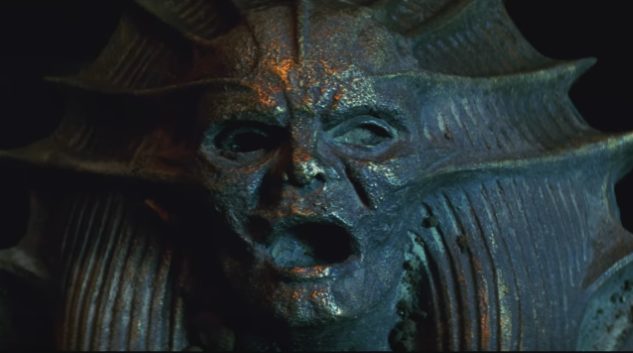
It’s funny to look back on how “shared universes” became the undeniable cornerstone of blockbuster filmmaking and studio finances from the end of the 2000s onward. Beginning with the true establishment of the Marvel Cinematic Universe (MCU) with 2008’s Iron Man, it’s no longer good enough to be based on a popular and potentially lucrative property. It’s not good enough to have sequel/franchise “potential.” Blockbusters and tentpoles now need to come with their very own extended, fully plotted cinematic universes—or they don’t get made. Or in other words: You don’t get to make the first movie without at least tentative plans to make a dozen more. Even when the franchise in question is Star Wars, you now need expanded universe movies like Rogue One and the “young Han Solo” film.
This approach, naturally, has had variable levels of success. Marvel is obviously the golden boy, cranking out profitable film after profitable film, long after naysayers claimed that standalone stories about the likes of Thor, Captain America or Ant-Man would be untenable. In practice, each “standalone” (inaccurate, given that they all still appear in each other’s films) movie only builds hype higher and higher for the eventual mega-payoffs, such as the always looming Avengers: Infinity War. It’s actually a lot like the WWE/pro wrestling method of building huge payoffs: Lots of interweaving storylines that build and grow throughout the calendar year to an eventual super-conclusion at Wrestlemania, after which the ownership/producers swim around in a giant room full of gold doubloons like Scrooge McDuck.
Other attempts at building these cinematic universes haven’t been nearly so successful. Look at DC, which has forged ahead despite Batman v. Superman and Suicide Squad being more or less derided by critics and audiences alike. It’s certainly not the reaction they were looking for, but projects like Wonder Woman, Justice League and The Flash were all set in stone by the shared universe formula years in advance, long before audiences ever had their first chance to voice an opinion of any kind. Nothing, short of actual FINANCIAL failure, can possibly stop them from happening. They have the capital to keep pushing forward and hoping for a real, unqualified success, while pausing long enough to wave at the graveyard containing titles such as The Amazing Spider-Man series, Josh Trank’s Fantastic Four or stillborn YA franchises like I Am Number Four or The Golden Compass.
Enter Universal, which is gestating its own shared universe for the classic Universal Monsters: Dracula, Frankenstein’s monster, the Mummy, the Wolf Man, the Invisible Man, Gill-Man (a.k.a. the Creature From the Black Lagoon), etc. Whether or not these films would be “horror movies” has been a point of great contention, with Universal’s chairman initially stating that they would all bear the much more likely “action-adventure” descriptor that is far more friendly for a Marvel-style shared universe. That statement unsurprisingly riled up classic horror fans, prompting Alex Kurtzman, head of the reboot series’ “brain trust” and director of The Mummy in 2017, to promise that the series would indeed feature horror on at least some level.
After getting our first real look at the universe via the premiere of the full-length trailer for The Mummy starring Tom Cruise, however, these promises look fairly empty. Suffice to say: These films look pretty troubling for film fans who have any real fondness for the classic Universal monster movies of the ’30s and ’40s, of which I am one. Let it be known, I love the original monster movies, and if you’ve never taken the time to actually watch them, you should. Therefore, let’s examine each monster, and ponder how their films could fit into the style of film/shared universe that Universal is now looking to build … with the assumption that they’re probably looking toward the MCU as their model.
The Mummy

The Mummy is a bit of an odd choice of monster to kick off Universal’s shared universe. One would think they might have gone with say, Dracula, whose 1931 film kicked off the entire series, or Frankentein’s monster, who has always been the true crown jewel of the franchise. However, the 2014 release (and critical drubbing) of Dracula Untold likely knocked the Transylvanian count out of the running on this one. It’s unclear whether Universal envisioned Dracula Untold as the first film of the Monster Universe from the very beginning, but it was reported that reshoots were indeed conducted at the time to add groundwork for the universe into the final product. Alex Kurtzman has since sworn off the film entirely, saying that it’s not canon to the rest of the Monster Universe, which now begins with The Mummy. Again: Not the best sign of things to come.
And so, we get The Mummy, which we can surmise was probably chosen because there’s at least some fondness/awareness left in the cultural consciousness from the financially successful Brendan Fraser Mummy trilogy of ’99 – ’08. It’s immediately apparent from the trailer, however, that this project is going in a very different direction from even that most recent series.
As so many have immediately observed, the tone of this trailer is all over the place, and it begins with a long sequence that feels much more like a Mission Impossible entry than anything within a country mile of the “horror” genre. It’s as if Tom Cruise somehow had carte blanche to script the film himself on the spot, and decided he just wanted to get his money’s worth out of the stunt training he’d done most recently for Rogue Nation. Of the entire 150-second trailer, at least 80 percent of it is material that would fit seamlessly into the likes of Mission Impossible or Jack Reacher: Running, jumping and swimming, explosions, gunfire, plane and bus crashes. The only thing in it that looks like a horror setting in the least is Cruise waking up in the morgue, without a scratch on him.
And then there’s the mummy herself, Princess Ahmanet. Suffice to say, there’s little to no connection here between this portrayal and Boris Karloff as Imhotep in 1932’s original The Mummy—a role where none of the characters are aware this man actually is a mummy, by the way—but that’s hardly surprising. One would expect her to instead take more cues from Arnold Vosloo, who played Imhotep in the Fraser trilogy, and this holds true at least somewhat, with one massive difference: This new Mummy is taking place in the present day, in 2017 rather than 1926. It’s hard to overstate how massive a difference this choice will likely make for the entire shared universe, because all the films will be in modern settings.
Setting the story in the modern day immediately makes certain narrative demands of the monster—in short, that they be nigh all-powerful in order to contend with modern technology. There’s just no way to successfully present the shambling mummy of the Universal sequels or the excellent 1959 Hammer Horror revival in the modern age, not in a time where a U.S. drone can blow a threat off the face of the Earth moments after it presents itself. Not even the magically imbued Imhotep of the Fraser films is powerful enough to reasonably be brought in as antagonist of a series set in 2017. Sure, he can down an escaping biplane in a sandstorm, but how is he against laser-guided thermobaric weaponry, eh?
And thus, what you get in this version of The Mummy is something that has come to feel familiar to every “end of the world” apocalyptic scenario—landmarks being destroyed/disintegrated by vague, world-threatening powers. Do these shots of Big Ben and Parliament’s destruction feel similar to say, X-Men: Apocalypse? Of course—because they’re meant to. This is the visual language of blockbuster filmmaking in 2016.
MCU equivalent: Captain America, in the sense that she’s “first” and presumably a team leader? This one is a stretch because the Mummy is much more reminiscent of a Marvel villain than hero. But I’m working under the assumption that all of the monsters have to eventually come together in a team-up film, or why would a shared universe exist?
Dracula
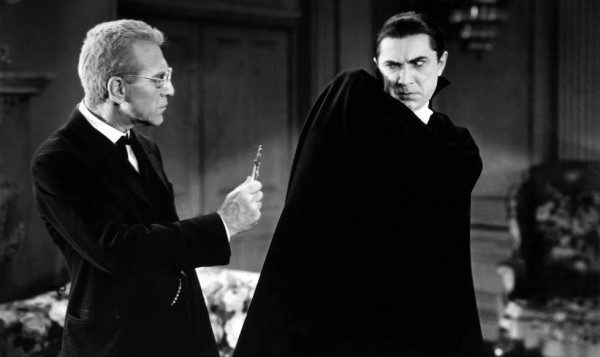
After the failure of Dracula Untold, it’s uncertain if the original Universal monster will truly be getting his own stand-alone feature within this series, or if the vampire’s involvement will simply be woven into the other entries. There currently is no “Dracula movie” scheduled on the docket,, but there is an “untitled Van Helsing film.” And given that Abraham Van Helsing is the fictional archnemesis of the count, it seems safe enough to assume that he would at least be making an appearance in there.
So, how does one portray Dracula in 2017? It’s certainly easier than The Mummy, for one. Although the 2013 NBC Dracula series landed with a resounding thud, the character is at least able to blend into modern human society, or walk down the street (albeit at night) without drawing attention. Keeping in mind that the grand aim of a shared universe is almost certainly a final “team up” blockbuster, does that mean Dracula plays the role of “face man” for this monster twist on The Avengers?
And while we’re on that particular topic, ask yourself this: Are these monsters even going to be portrayed as the villains of their films? The first trailer for The Mummy certainly makes Princess Ahmanet look like the antagonist, but if that’s the case, does that mean we never get any interaction between the various monsters because they’re defeated at the end of each movie? Are the mundane human characters—the Tom Cruises of each film—supposed to be the overarching heroes? Who wants to see that, in a series where each film is named after the monster in it? And in that case, doesn’t it almost necessitate that every monster eventually plays the role of anti-hero? It’s the only way you’d be able to bring them all together in the end, Suicide Squad-style. And yes, I too am saying “oh great, because that’s the comparison we want, Suicide Squad.”
Also, given that Dracula would probably be the easiest of all these characters to use in a serious and genuinely frightening sense (because he can actually live among us in modern society), it’s all the more disappointing that the shared universe doesn’t include a film to call his own.
MCU equivalent: Tony Stark. He’s the suave one of the team.
Frankenstein’s monster
If we’re focusing strictly on the original Universal series, then Frankenstein’s monster is the undisputed king of this stable. His series is far and away the most rewatchable and enjoyable from a quality standpoint, and it’s also one of the rare series where sequels such as Bride of Frankenstein and even Son of Frankenstein surpass the original. Compared to say, the endlessly dull sequels to The Mummy in the ’40s, and it’s not hard to see why Frankenstein’s monster has remained the poster boy monster for Universal over the years.
That, along with the fact that the original story from Mary Shelley is in the public domain, also means that his story has continued being adapted over the course of decades, most often with poor results. In the last few years alone, we had 2014’s I, Frankenstein starring a handsome, barely scarred Aaron Eckhart, and 2015’s Victor Frankenstein, which focused almost exclusively on the doctor rather than the monster.
Universal is reportedly planning an “untitled Bride of Frankenstein film,” which is at least an interesting way of going about things for the monster universe. After all, and as so many film fans gripe whenever we re-launch superhero franchises: Do we really need to see an origin for Frankenstein’s monster yet again? Who among us is aware of the monster, but doesn’t know how he was created? I submit that the answer is “no one,” so why not join this story already in progress? Frankenstein, to its credit, is a story that is more able to grow and change with the times than The Mummy, etc., because it’s so closely tied to the advancements of science and the ethical questions raised via groundbreaking discoveries. As man continues to experiment with genetic modification and the legitimate possibility of creating artificial life becomes more of a reality, perhaps there really is something interesting to say within the context of a Frankenstein movie.
Of course, given that these are action-adventure films, it’s probably safer to assume that the film will involve The Monster throwing city buses at a rival monster and functioning as “the Hulk” member of this pseudo Avengers team. But hey, a guy can dream.
MCU equivalent: Obviously the Hulk.
The Invisible Man
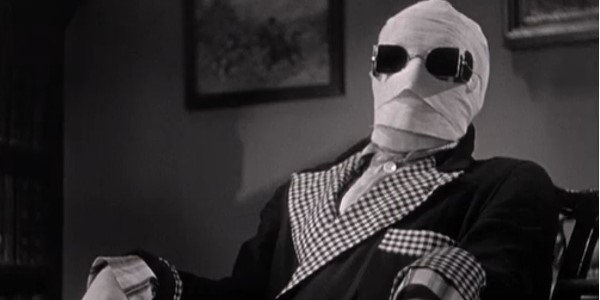
I honestly have no idea how you make an Invisible Man movie in 2017. The 1933 original is an odd duck among the classic Universal Monsters, a science fiction-inflected suspense film that is often more funny/campy than it is scary, especially when you stop to really consider the limitations of being invisible. The titular invisible man is a fairly absurd character, and one who is slowly driven mad by some combination of the invisibility serum and his own rampant ego. He’s given a gift that initially sounds powerful, but is in reality a hindrance more than anything, owing largely to the fact that it can’t turn his clothing invisible along with his body. He therefore has to be completely nude anytime he actually wants to be functionally invisible, and this limits what he can do by a huge degree. This is a “monster” who can’t go outside without worrying about death via exposure, and as such, it’s really easier to not think about him as a “monster” at all. In reality, The Invisible Man has more in common with ’50s sci-fi in the vein of The Incredible Shrinking Man—he’s our viewpoint character, and although he’s a dick, we’re invested in his fight to survive.
In 2017, though? Even if he somehow is able to be clothed and invisible at the same time, “mere” invisibility isn’t quite the power it once was. Technology has advanced to the point where detection goes far beyond the visible spectrum. This guy isn’t going to waltz into a government base, past thermal vision cameras, laser grids, freakin’ air pressure sensors, without also having the skillset of say, The Avengers’ Black Widow. Which is, naturally, exactly the role that I would expect him to play on this team.
As a result, any Invisible Man film almost feels like it has to exist on a smaller, more intimate scale than the city-destroying action bombast we’ve already seen in The Mummy trailer. I sincerely hope that Universal understands that these different monsters demand different styles of film—they can’t all be action spectacles designed to compete with the likes of The Fast & The Furious. Maybe take the Invisible Man and make him the world’s greatest jewel thief? An Ocean’s Eleven-style heist movie would nicely fit the character, but then it runs into the expected problem: How do you bring the character into the same film as a Mummy who can demolish Parliament with a flick of her bandaged wrist? And I have no answer for that problem.
MCU equivalent: Black Widow
Gill-Man, aka The Creature From the Black Lagoon
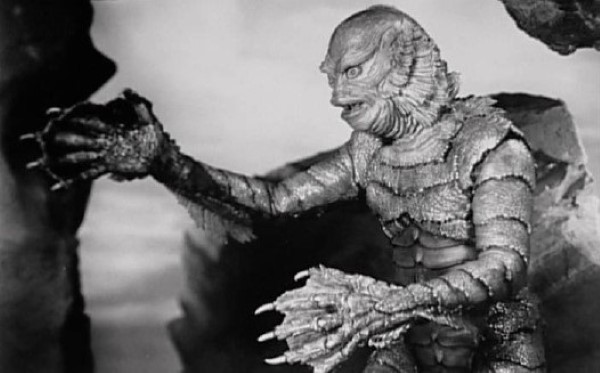
Even more than The Invisible Man, I don’t know how you base an entire modern film around the character of Gill-Man. One imagines that you’d have to completely redesign the creature’s iconic look to suit a modern multiplex audience, and of course the majority would end up being CGI rather than a man in a suit, for the sake of mobility and action sequences.
But more importantly, how do you build this movie with the creature as an actual protagonist, or one that’s on screen for any substantial amount of time? The original Creature From the Black Lagoon is ultimately all about the human characters and their incursion into Gill-Man’s domain, and he appears in limited doses. Sure, he has some King Kong-style infatuation with Julie Adams (who wouldn’t?), but that hardly makes Gill-Man a character you can turn into a member of an Avengers-style team-up. Hell, Gill-Man isn’t even verbal!
Perhaps in the end, this film will end up taking some cues from the DCU’s own Aquaman feature, starring Jason Momoa? But to assume that there’s any real cache in the name Creature From the Black Lagoon is probably fallacy. This isn’t Dracula, or Frankenstein’s monster. I can’t help but end up feeling like we’d only be getting a Gill-Man movie for the sake of adding an additional monster to the final team up. That’s the reality of the cinematic universe philosophy of filmmaking—make one film that could never justify its existence on its own, because it simply gives you a chess piece to use in the “real” film you wanted to make all along … aka, the one that makes the most money.
MCU equivalent: Groot, perhaps? The stoic, somehow lovable one? Your guess is as good as mine.
The Wolf Man
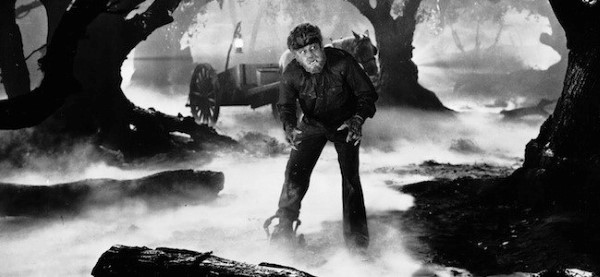
I’m almost surprised that Universal even has a Wolf Man remake currently on the docket, considering that we just had a legitimate, big budget remake of the 1941 original back in 2010. That’s just six years ago, people. That film, despite earning Rick Baker yet another Academy Award for best makeup, failed to review well OR perform well at the box office, ultimately losing tens of millions. How much misplaced confidence do you need to be a Universal executive pitching this idea in a board room in 2016? Does it just go: “Hey guys, I know that the last time we did this six years ago it was one of our most expensive flops ever, but I’m 100% certain that people are going to just love it now.”
As for the role he would play, The Wolf Man/Larry Talbot is always the most unwilling of monsters. In that sense he’s sort of like Bruce Banner, in that he’s always trying to contain the beast within. The actual Wolf Man, though, is a physical, rough-and-tumble brawler.
MCU equivalent: If the X-Men series ever gets folded into the MCU, Wolverine would be the obvious analog. But if we have to pick from the MCU only … Drax, perhaps?
Is it folly to assume that these monsters would eventually be coming together in a final “team up” movie? I don’t think so, because every major “shared universe” we’ve seen so far has had this kind of film as its ultimate, driving goal. Individual Marvel movies are bridges to the next Avengers cash-in, the same as individual DC stories are bridges to Justice League and other meta-payoffs. I can’t say that I have high hopes for the eventual monster mash that results in trying to combine The Mummy with the likes of Gill-Man, but it will at least be fascinating to see how Universal attempts to pull off this tough task without trampling completely over the legacy of its classic films from the ’30s and ’40s. I suppose it’s possible … but I’ll believe it when I see it.
Jim Vorel is a Paste staff writer and resident monster expert. You can follow him on Twitter for more film musings.
